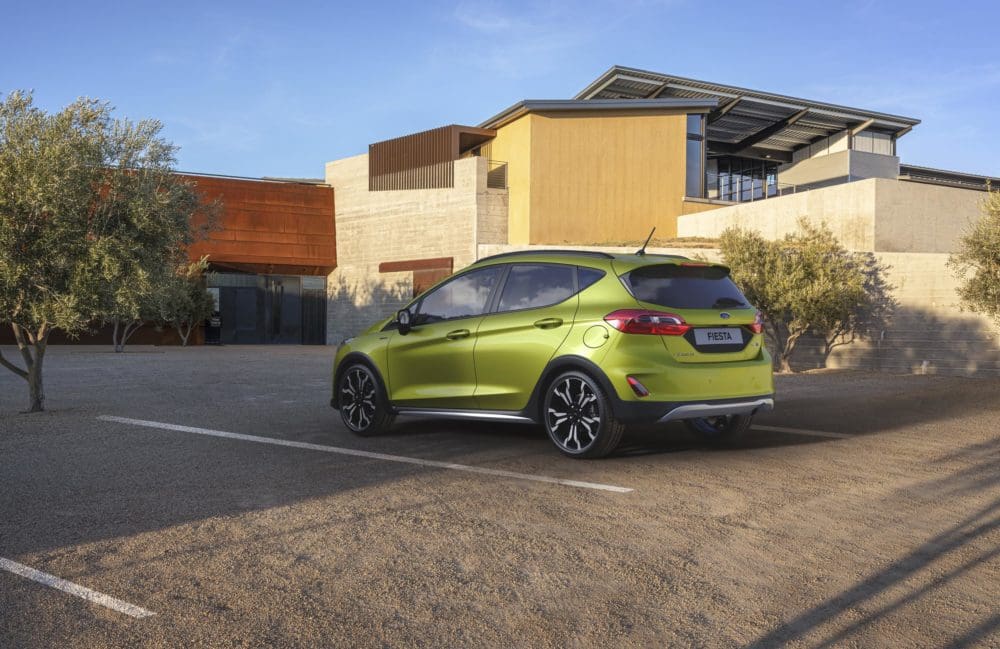



“Adding EcoBoost Hybrid technology to Fiesta’s best-in-class driving dynamics means customers can have even more power and still go further on a tank of fuel,” said Roelant de Waard, vice president, Marketing, Sales & Service, Ford of Europe. “The Fiesta EcoBoost Hybrid will help Ford bring the benefits of electrification to more drivers than ever before.”
In addition, the Fiesta is now better connected following the introduction of a standard FordPass Connect modem enabling a range of functions to make the ownership experience easier and more rewarding using the FordPass mobile app.
EcoBoost Hybrid efficiency
Fiesta drivers can now benefit from Ford’s EcoBoost Hybrid technology, first introduced for passenger vehicle customers in the new Ford Puma crossover in late 2019.
Available in 123 bhp and 153 bhp power outputs, Fiesta EcoBoost Hybrid models feature a belt-driven integrated starter/generator (BISG) in place of the standard alternator, enabling recovery and storage of energy usually lost during braking and coasting to charge a 48-volt lithium-ion air-cooled battery pack.
The BISG also acts as a motor, integrating with the engine and using the stored energy to provide torque assistance during normal driving and acceleration, as well as running the vehicle’s electrical ancillaries.
The intelligent, self-regulating mild-hybrid system continuously monitors how the vehicle is being used to determine when and how intensively to charge the battery for optimal benefit, and when to utilise the stored battery charge using one of two strategies:
The BISG also has enabled Ford engineers to lower the 1.0-litre EcoBoost engine’s compression ratio and add a larger turbocharger for more power, by mitigating turbo-lag using torque supplementation that also rotates the engine faster for maintained turbocharger boost response.
The more powerful BISG also enables the Fiesta EcoBoost Hybrid’s Auto Start-Stop technology to operate in a wider range of scenarios for even greater fuel savings, including when coasting to a stop below 15 mph and even when the vehicle is in gear with the clutch pedal depressed.
Both Fiesta EcoBoost Hybrid and traditional petrol powertrains – available with 95 PS and 125 PS power outputs – now utilise the latest generation of the multi-award-winning 1.0-litre EcoBoost engine featuring cylinder deactivation.
The technology further enhances fuel efficiency by automatically switching off one of the cylinders when full capacity is not needed, such as when coasting or cruising with light demand on the engine and can disengage or re-engage one cylinder in 14 milliseconds with no compromise in performance or refinement.
Fiesta’s 123 bhp 1.0-litre EcoBoost engine can now also be specified with a new seven-speed dual-clutch automatic transmission that offers fuel efficiency improvements of up to 15 per cent compared to the out-going 99 bhp 1.0‑litre EcoBoost six-speed automatic configuration (NEDC) – despite offering 25 per cent more power. An 84 bhp 1.5-litre TDCi diesel engine is also offered for high-mileage drivers.
© Motorworld Media 2023
Registered Office: 4 Capricorn Centre, Cranes Farm Road, Basildon, Essex. SS14 3JJ
Company Number: 8818356
Website designed by Steve Dawson